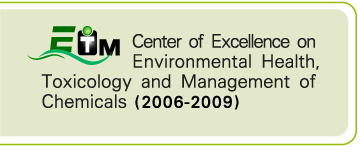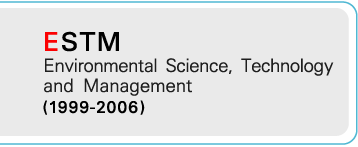| This research aims to investigate and compare the environmental impacts of waste management options for Non-Metallic Fraction (NMF) of Printed Circuit Board Waste (PCBW), including recycling as new products, landfilling, and incineration. It is also to compare the environmental impacts between the two new products made of NMF and a traditional GFRP product. One new product, called “Modified Glass Fiber Reinforced Plastic (GFRP) table top” is a recycled product using NMF from PCBW as a secondary material instead of plywood. Another new one, called “New table top” is 100% recycled product using NMF from PCBW as a secondary material instead of glass fiber and plywood. To compare these three products (two new products, and the traditional GFRP product), it was found that the NMF from PCBW can be potentially used for both new products, as a substitution of plywood in the modified GFRP product, and 100% replacement of glass fiber and plywood in the new table top product. In terms of raw material usage, the amount of polyester resin was used the most in the modified GFRP product. This is due to the fact that polyester resin is used to make up GFRP laminated layer, and used in casting process to make up NMF composite according to production process. In addition, the process of these three products is different in the second step of production. Since the NMF composite was used instead of plywood in the modified GFRP product, two manufacturing techniques involve, namely hand lay-up technique for making a laminated structure of polyester resin and glass fiber, and mixing and casting technique for making NMF composite. In the new product (100% NMF composite), only mixing and casting technique was used to replace glass fiber and plywood. To compare environmental impacts of the modified GFRP table top product, the new table top product, and the traditional GFRP table top product, it shows that new table top product (100% NMF), and traditional GFRP product can lead to climate change, human toxicity, marine ecotoxicity, and fossil depletion. The traditional GFRP product can additionally cause agricultural land occupation impact resulting from plywood used in the production process. In other words, the use of NMF to replace plywood can reduce the impact category of agricultural land occupation. To compare environmental impacts among NMF waste management options (recycling as new product (100% NMF), landfilling, and incineration), the recycling of NMF as a new product is likely to be the most appropriate waste disposal option because of lower impact in climate change and marine ecotoxicity, and no impact in agricultural land occupation. According to the study of environmental impacts of NMF landfilling, stabilization and solidification technique using cement was investigated. In case of NMF (or Non-valuable residue – NVR) derived from Printed Circuit Board Assembly (PCBA), the results show that blank samples after curing 28 days exhibited compressive strength of 20.75 MPa while specimens containing NMF from PCBA at rate of 20%NMF, 30%NMF and 40%NMF exhibited compressive strength of 7.36, 4.17 and 1.35 MPa, respectively. These compressive strength values of all solidified/stabilized NMF products meet the U.S. EPA requirements of unconfined compressive strength at 0.35 MPa for disposed solidified/ stabilized waste in landfills. Moreover, all specimens containing NMF from PCBA present Pb concentration for Toxicity Characteristic Leaching Procedure (TCLP) analysis below the limit value of 5 mg/l specified by the U.S. EPA. Standard. In the study for NMF (or NVR) from PCB, the compressive strength of 20%NVR, 30%NVR and 40%NVR products were at 7.36, 4.17 and 1.35 MPa, respectively. Again these values are all higher than 0.35 MPa required by U.S. EPA. Standard. In addition, heavy metal concentration in Waste Extraction Test (WET) leachate from all solidified/stabilized NMF specimens was lower than the limit value of Ba (100 mg/l), and Cu (25 mg/l) specified in Thailand Notification of the Ministry of Industry B.E. 2548 (2005) on Disposal of Wastes or Unusable Materials. It can be concluded that the management of NMF from PCBA and PCB using cement-based solidification/stabilization technique is effective in terms of compressive strength and immobilization of heavy metals in NMF. แหล่งข้อมูล:
|
 Center of Excellence on Environmental Health and Toxicology (EHT)
Center of Excellence on Environmental Health and Toxicology (EHT)










